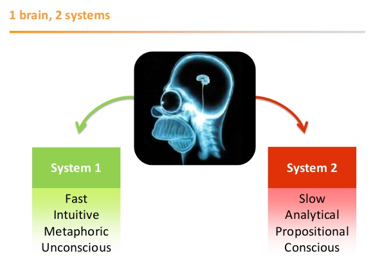
Human behavior
Some years ago, one of my employees, a very competent quality manager, asked me a question to which I could not give him a good answer:
“If we have very good and clear procedures, good training programs and engaged employees - why do we still have too many human errors and what can we do to reduce or eliminate them?”
Human error frequently occurs even when the organization considers that they have done everything to prevent its occurrence. Documentation appears accurate, personnel are fully trained, and equipment operates as designed; but errors continue to be made.
The unanswered question started my journey to learn much more about human behavior and introduced me to the science of behavioral economics and two very important gentlemen:
- Psychologist Daniel Kahneman, who was in 2002 awarded the Nobel Memorial Prize in Economic Sciences for having integrated insights from psychological research into economic science, especially concerning human judgment and decision-making under uncertainty.
- Economist Richard Thaler, who was in 2017 awarded the Nobel Memorial Prize in Economic Sciences for his contributions to behavioral economics and his pioneering work in establishing that people are predictably irrational in ways that defy economic theory.
Daniel Kahneman and Richard Thaler are pioneers behind seeing people as real Humans (human beings) and not as Econs (homo economicus), who are always making perfect evaluations & forecast, taking rational decisions and have no self-control problems.
Daniel Kahneman have introduced two systems of thinking:

It is popular to think of System 1 as Homer Simpson and System 2 as Homer Sapiens.
We like to see us self as Homer Sapiens, but our brain is not built for taking rational decisions all day long as it would demand a lot of energy and resources.
In reality, we are most of the time Homer Simpson taking decisions influenced by cognitive biases.
Cognitive biases are systematic patterns of deviations from norm or rationality in judgement. One typical bias is the “brandwagon effect”, which is the tendency to do (or believe) things because many other people do (or believe) the same.
You can watch a funny old experiment on YouTube - Asch Conformity Experiment.
Another important bias is default effect, where there is a tendency to favor the default option between several options. A typical example is that Denmark is suffering from organ donation as the default is not to give organs and you must do an active registration to donate your organs. In Norway and Sweden it is opposite as you are automatic donating your organs and have to do an active registration in case you do not want to do it.
There are long lists with cognitive biases from decision-making, belief and behavioral biases to social biases and memory errors.
What have all this to do with Quality Leadership and Quality Management?
Actually, some aspects of human behavior are already addressed in Good Manufacturing Practice. One example is that products shall be controlled and released by an independent quality unit.
Daniel Kahneman has revealed that Humans are suffering from loss aversion, as loss is more emotional painful than the joy of winning. It means that we tend to make irrational evaluations and take irrational decisions to avoid a potential loss. I have during my career had several discussions with production managers, who were trying to save rejected products by rework or sorting, that would even cost more than to produce new products and still with a risk for defect. It was easier for me to be more rational in the evaluation and decision process as I was not to the same extent impacted by the loss aversion as the production managers were.
Even though GMP has elements of human behavior integrated in the requirements, I think that we in general are designing systems, processes, procedures, information, training to Econs and not to Humans.
I strongly believe that by increasing the knowledge of human behavior in the organization, you can strengthen your quality leadership and quality management in many areas – some of these could be:
- Communication
- Planning process
- Decision making
- Procedures
- Training Programs
- Deviations and CAPAs
- Systematic Problem Solving
- Risk management
- Change management
I hope this has inspired you to look more into the aspects of human behavior and you are more than welcome to contact me for an informal discussion about your challenges and to hear more about how I can help you, your team and/or your organization. I will always base my approach on where you are in your process, taking into consideration the size and complexity of your organization.
